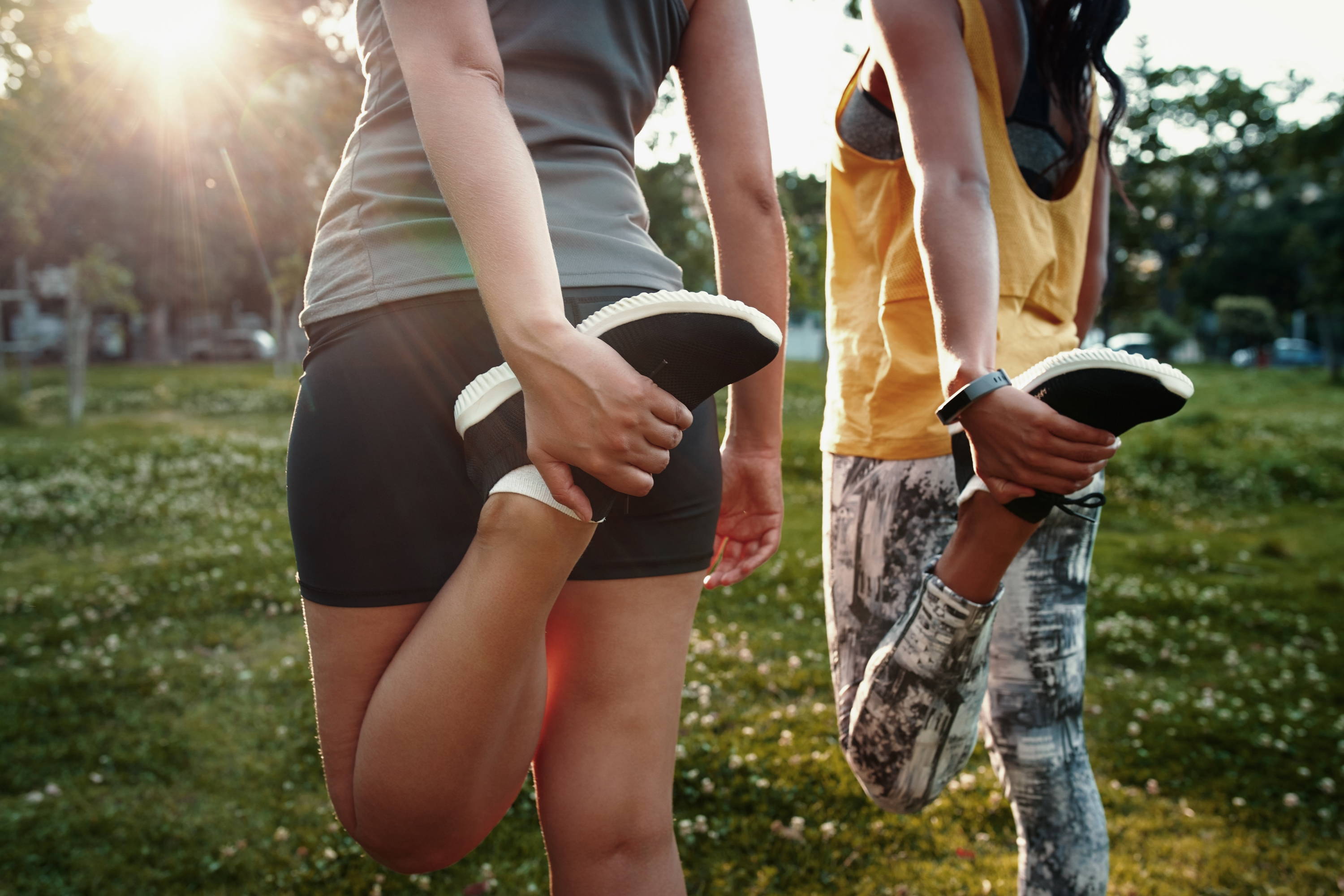Flexibility is one of the most important yet overlooked aspects of an exercise routine. As we age, our range of motion naturally declines. From age 20 to 49, our flexibility reduces by about 10% each decade. However, studies show that a consistent stretching routine improves flexibility in your limbs and joints. A better range of motion makes you less susceptible to injuries and enhances your ability to perform daily tasks.
So why don’t more people stretch more? Many misconceptions surround stretching, from benefits to protocols. Most people will be pleased to learn that an effective stretching routine can take as little as five minutes a day.
Whether you’re a competitor seeking peak performance or an everyday athlete wanting to move better, we all could benefit from stretching more consistently.
In this article, we'll cover:
-
The benefits of a stretching routine
-
The four types of stretching
-
Science-backed answers to stretching FAQs
-
How to start your stretching routine
Benefits of Stretching
In addition to relieving general soreness, stretching provides many health benefits. Flexibility is important for physical movements and can help prevent injuries, reduce pain and inflammation, and impact exercise recovery speed. Stretching may even potentially slow the progression of certain diseases. Let’s briefly discuss the four types of stretching so you can find what works for you.
Four Different Types of Stretching
-
Static- Involves holding a nonmoving position to immobilize a joint at its end range of motion. It can be active (the user adds force behind the hold) or passive, where you relax into your range of motion.
-
Dynamic- Involves using momentum to move a limb through a given range of motion. It typically mimics a movement pattern used in the upcoming workout or event. Examples include baseball players performing arm circles or runners doing hip swings before they start exercising.
-
Ballistic- Incorporates bouncing-type movements to trigger the stretch reflex used in athletic events and pre-training warm-ups. Compared to dynamic stretching, ballistic provides less control at the end range of motion. These high force, short duration movements may be associated with increased injury risk and should be performed with caution.
-
PNF (Proprioceptive Neuromuscular Facilitation)- Also known as "contract-relax stretching," PNF combines stretching and contracting muscles to increase joint range of motion. After a passive 10-second pre-stretch, the contract-relax technique requires the individual to push against the force provided by an object or partner so that a concentric muscle action occurs throughout the full ROM of the muscle group targeted for the stretch.
Stretching FAQs
What’s the best type of stretching for long-term benefits?
While dynamic and ballistic stretching can be beneficial before exercise, static stretching appears to be the most effective at increasing long-term flexibility.
How long should I hold a stretch?
Research determined that 30 seconds is the minimum threshold for flexibility benefits for static hold stretches (generating no momentum to move into or through the stretch). No increase in flexibility occurred when the stretch duration increased from 30 to 60 seconds.
Will increasing the intensity of a stretch provide faster benefits?
Research (Wyon et al.) showed that "micro stretching" (defined in the study as 30-40%, where 100% would be slightly painful) is more effective than increasing the intensity of the stretch. Instead of focusing on intensity, aim for consistency and frequency. The American Council of Exercise recommends performing flexibility exercises 2 to 3 times a week for 30 minutes, with daily being the most effective.
What’s the best stretching routine?
In a comprehensive review of different stretching routines, Palma et al. discovered that a minimum frequency of five times per week, with a total stretching time of five minutes per muscle group each week, was optimal.
How to Start a Stretching Routine
Start simple. Do 2-4 sets of 30-second static holds per muscle group, five days per week.
-
Standing Quadriceps Stretch (30 secs each side) - Stand up tall and shift your weight to the R. leg. Lift your L. foot and grasp it with your L. hand. Pull your L. foot toward your glutes until you feel the stretch in your quads.
-
Standing Hamstring Stretch (30 secs each side) - Stand upright with the spine in a neutral position. Place the R. leg in front of the body with the foot flexed, heel pushed into the ground, and toes pointing toward the ceiling. Slightly bend the L. knee and gently lean forward until you feel the stretch in your R. hamstring.
-
Figure 4 Stretch (30 seconds each side) - With your back on a mat, bend your knees and plant your feet hip distance apart on the mat. Cross your R. leg over your L. thigh, placing the outside of your R. calf just above your L. knee. Allow your R. knee to open outward and pull your L. thigh toward your abdomen and hold.
-
Supine Spinal Twist (30 seconds) -Lie on your back and hug your R. leg into your abdomen. Place your L. hand on your knee and extend your R. arm along the floor
at shoulder height. Draw your R. knee over to your left side. Aim to keep your R. shoulder on the floor and turn your head to the right.

